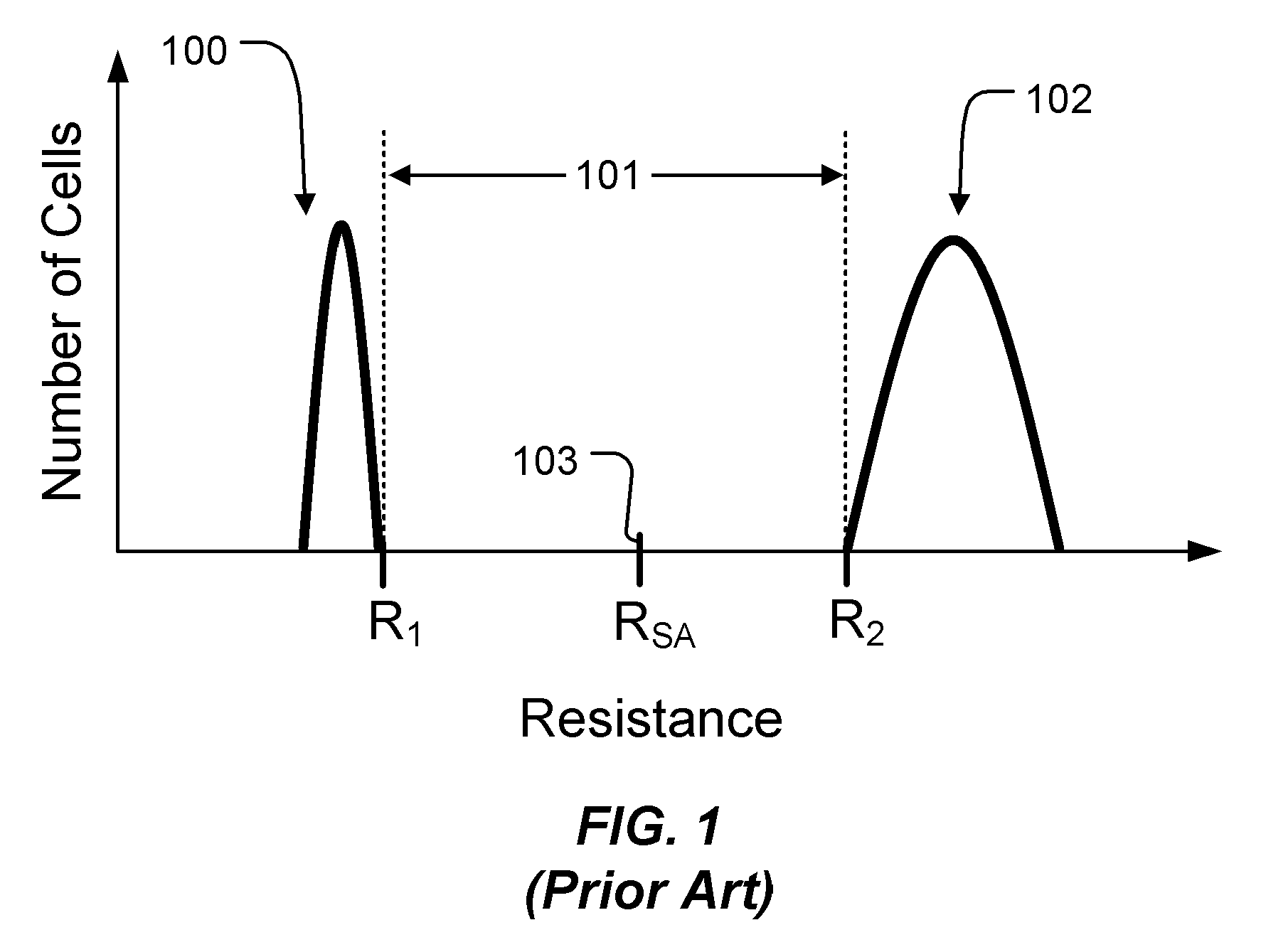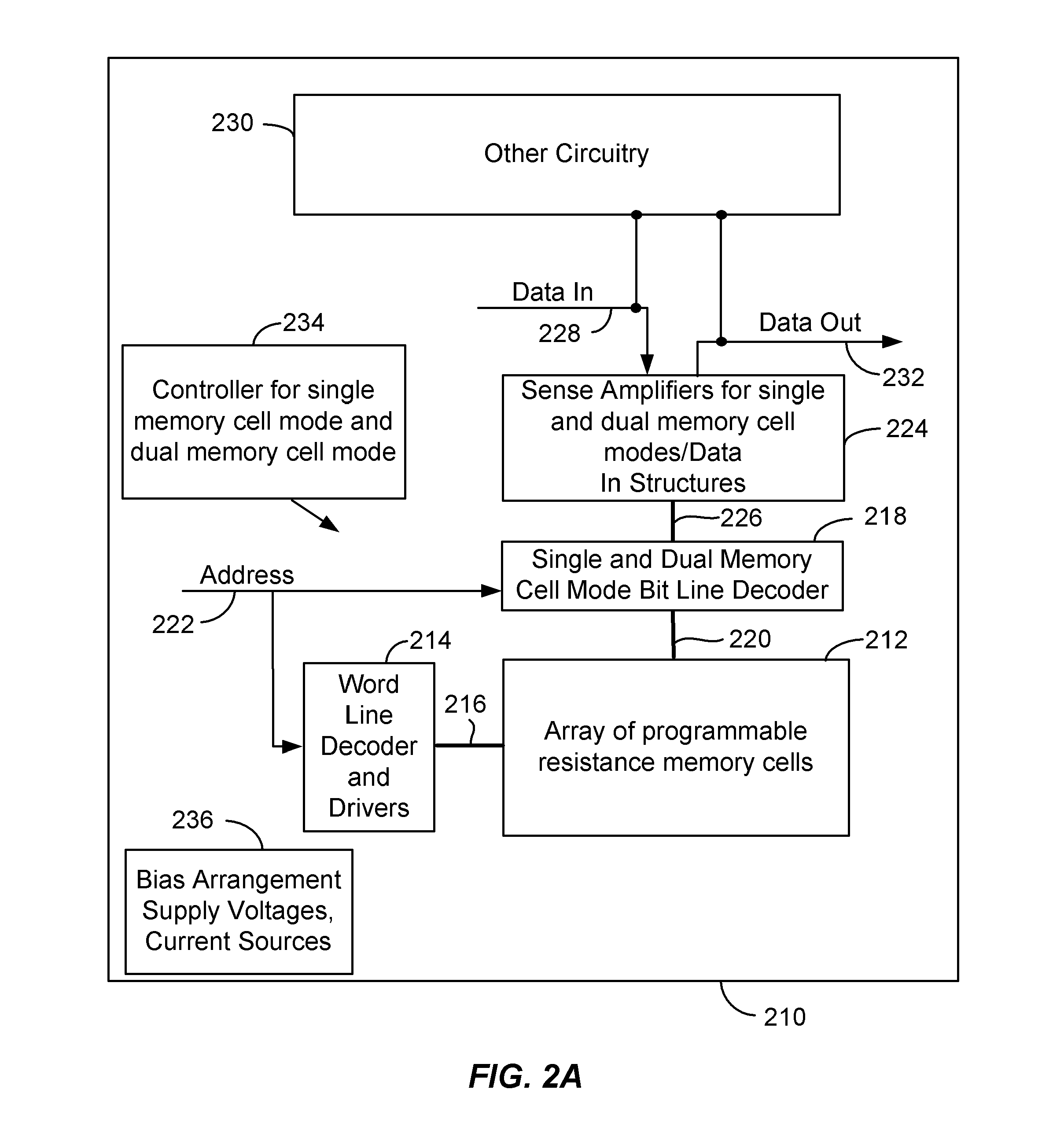2t2r-1t1r mix mode phase change memory array
a phase change, memory array technology, applied in the field of memory devices, can solve the problems of data error, data retention problem and bit error of those memory cells, data error, similar problems can arise in other types of programmable resistance materials, etc., to achieve excellent nonvolatile data retention performance, high speed operation of memory cells, and reliable distinguishing
- Summary
- Abstract
- Description
- Claims
- Application Information
AI Technical Summary
Benefits of technology
Problems solved by technology
Method used
Image
Examples
first embodiment
[0032]FIG. 2A is a block diagram of an integrated circuit 210 including a memory array 212 of programmable resistance memory cells. The memory cells include an access device such as a diode or transistor, and a programmable resistance memory element. As described in more detail below, the integrated circuit 210 is operable in a dual (2T-2R) mode to store a data value in a pair of memory cells in the array 212 based on a difference in resistance of a first memory cell in the pair and a second memory cell in the pair to provide high speed operation of memory cells in the array. The memory device is operable in a single (1T-1R) mode to store a data value in a particular memory cell in the array 212 based on the resistance of the particular memory cell to provide excellent nonvolatile data retention performance and higher memory density.
[0033]A word line decoder 214 is coupled to and in electrical communication with a plurality of word lines 216 arranged along rows in the memory array 2...
second embodiment
[0037]FIG. 2B is a block diagram of an integrated circuit 310 operable in the single and dual modes. The integrated circuit 310 of FIG. 2B includes a single mode sense amplifiers of block 224-1 coupled to a single mode bit line decoder 218-1 via data bus 226-1. The single mode bit line decoder 218-1 is coupled to a first memory array 212-1 via bit lines 220-1, and word line decoder and drivers 214-1 is coupled to the first memory array 212-1 via word lines 216-1, so that the memory cells of the array 212-1 operate in the single mode. Dual mode sense amplifiers of block 224-2 is coupled to dual mode bit line decoder 218-2 via data bus 226-2. A second memory array 212-1 separate from the first memory array 212-1 is coupled to a dual mode bit line decoder 218-2 via bit lines 220-2, and coupled to word line decoder and drivers 214-2 via word lines 216-2, so that the cells in the second memory array 212-2 operate in the dual mode.
[0038]FIG. 3A illustrates a schematic diagram of an embodi...
PUM
 Login to View More
Login to View More Abstract
Description
Claims
Application Information
 Login to View More
Login to View More - R&D
- Intellectual Property
- Life Sciences
- Materials
- Tech Scout
- Unparalleled Data Quality
- Higher Quality Content
- 60% Fewer Hallucinations
Browse by: Latest US Patents, China's latest patents, Technical Efficacy Thesaurus, Application Domain, Technology Topic, Popular Technical Reports.
© 2025 PatSnap. All rights reserved.Legal|Privacy policy|Modern Slavery Act Transparency Statement|Sitemap|About US| Contact US: help@patsnap.com



